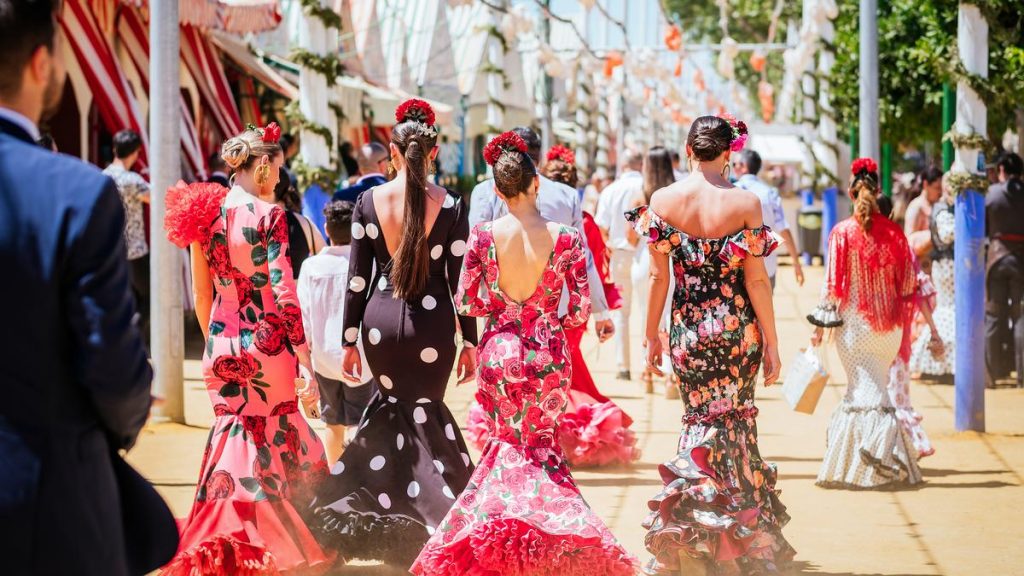Once worn solely by dancers, the flamenco dress and its contemporary variations are now used by women in Spain for weddings, fairs, and receptions. Transforming the classic flamenco dress into a blouse and skirt or a pant suit is something that many designers like Jose Hidalgohave done successfully.
We are in Seville, the largest city in Andalucia, Spain — also the home of flamenco dancing — at the boutique of designer duo Pablo Retamaro and Juanjo Bernal (aka Cloe) known for their flamenco style dresses.
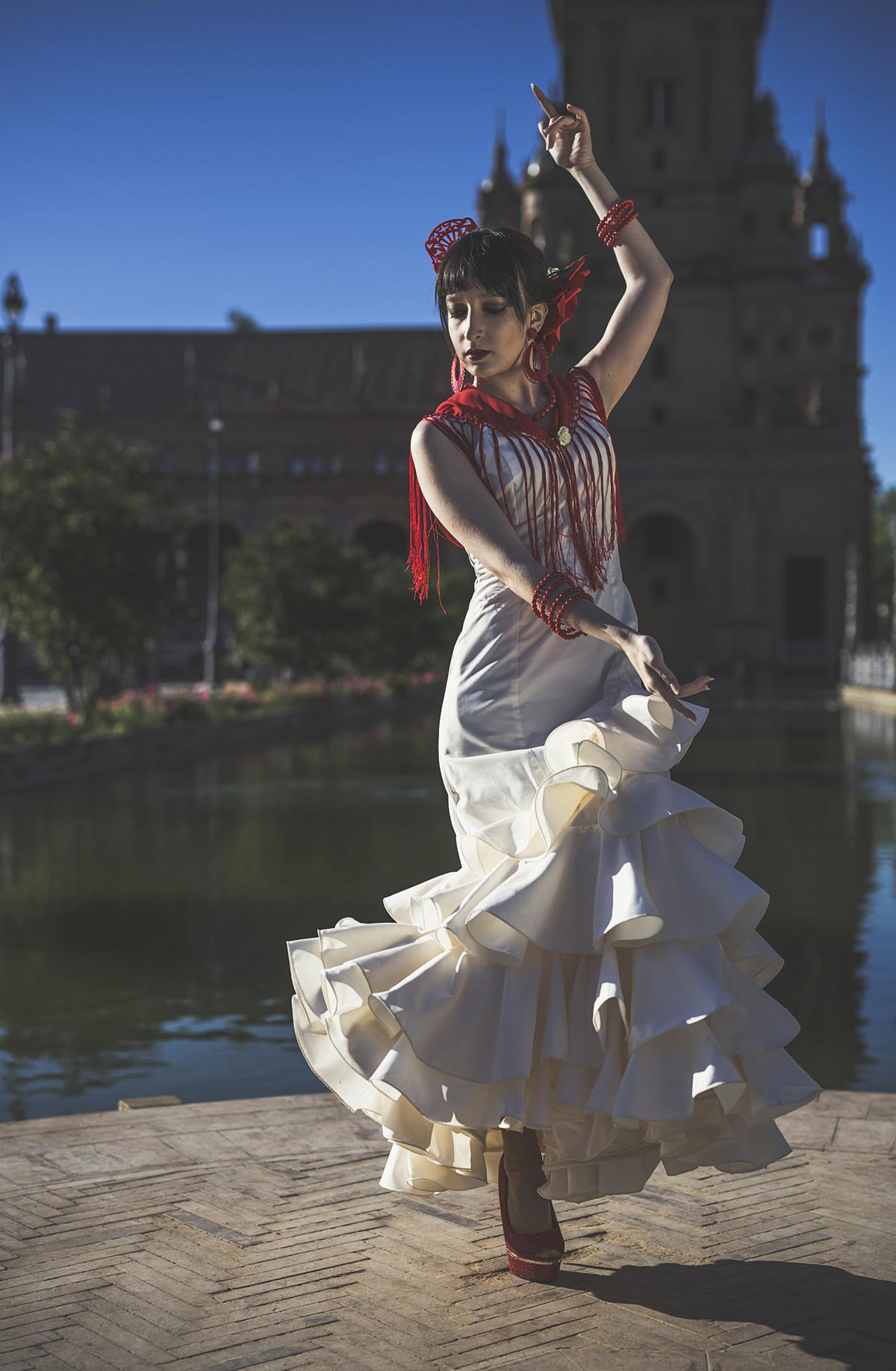
A woman performing the flamenco dance
| Photo Credit:
Getty Images
The dress — which represents the passion and energy of the flamenco dance — had its origins in the costumes won by the working class women who attended Andalusian livestock fairs in Spain in the 18th Century. With a Chinese shawl draped over their shoulders, their attire was captured in paintings by master artists like Francisco Goya. Another inspiration was the ruffled dress with polka dots worn by the gitanos or gypsy women.
When the Seville Fair started in the middle of the 19th Century, the wealthy women also adopted this style, perfecting it and adding some details, as they wanted to boycott Parisian fashion. However, what actually made flamenco fashion mainstream was the launch of the International Flamenco Fashion Show in 1996, which has since become an annual event with catwalk shows.
How the Manila shawls are made
Atelier Angeles Espinar is set in the small town of Villamanrique de la Condesa, outside Seville. Bespectacled Maria Jose Espinar is the third generation at the helm of the family workshop, working here from 1978. “The tradition of Manila shawls or Manton de Manila goes back centuries coming across oceans from Macau and China, introduced through Spanish trade, passing through Mexico, before arriving in Spain. The process is painstaking with hand embroidery that requires patience and skill, and even the fringes are braided manually,” says Maria.
The shawls are embellished with mainly floral motifs such as birds, butterflies and fruits. Architecture also figures in many designs. Maria holds up a beautiful mantone that depicts all the cities of Andalusia with their signature buildings. “We dye the silk ourselves and no two colours are alike. In the 1970s, when the embroidery was losing its importance, my mother was determined to reinvent it, so she started teaching and training women and I got involved in her endeavour,” says Maria, opening a cupboard full of antique designs drawn on tracing paper. Besides embroidering new pieces, she also undertakes restoration of antique heirloom pieces, many of which are on display at her atelier. Many pieces take as long as eight months or a year, to complete.
Maria’s project of pride was designing for Dior in 2023, when Maria Grazia Chiuri, creative director of Dior visited the workshop for collaboration for their major fashion show in the country. The designer who mainly works on Italian silk, has a new project in the offing with an English brandto embroider shoes. Her daughter is not interested in joining the business, and she wonders if she will be the last generation in this artistic tradition.
The International Flamenco Fashion Week (SIMOF) is held just after the We Love Flamenco catwalk (from January 14 to 20) to promote and showcase new flamenco dress collections to an international audience. Started by Raquel Revuelta (director of Doble Erre) and the Palace of Exhibitions and Congresses of Seville (FIBES), the event is held at the Palace of Exhibitions and Congresses of Seville, FIBES.
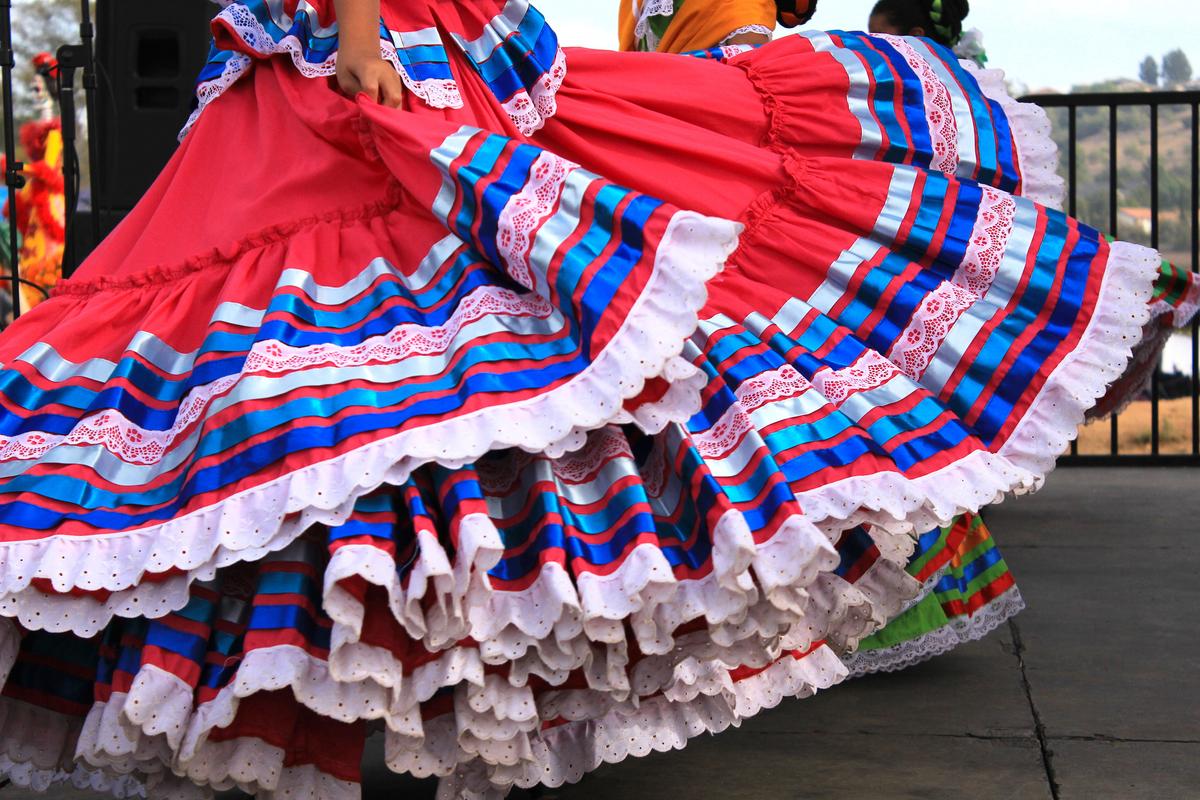
Traditionally, Spanish flamenco dresses were sewn in starched fabrics
| Photo Credit:
Simone Hogan
A contemporary touch
“Though our outfits are rooted in folk tradition, we follow the latest international design and colour trends from Paris and Milan, and improvise our collections every year. This is the only regional tradition where fashion evolves every year,” explains Pablo, who comes from a family of fashion designers.
We visit their atelier where a team of six designersare engaged in producing the dresses. Reels of colourful thread, bales of Italian silk and crepe, and patterns on a board adorn the room. Two designers are putting the finishing touches to the ruffles on a dress on a mannequin. “We make dresses for the runway, for our collections, as well as customise them for clients. There’s no price limit on a customised design as it depends on many factors like fabric, patterns and hours of handwork. Most of it is handmade except for some machine tailoring,” says Pablo.
Traditionally, Spanish flamenco dresses were sewn in starched fabrics, such as organdie, nylon, but today most designers use crepe or silk. A professional dress for a dancer could weigh as much as 25 kilograms but most dresses weigh 10-15 kilograms on average.
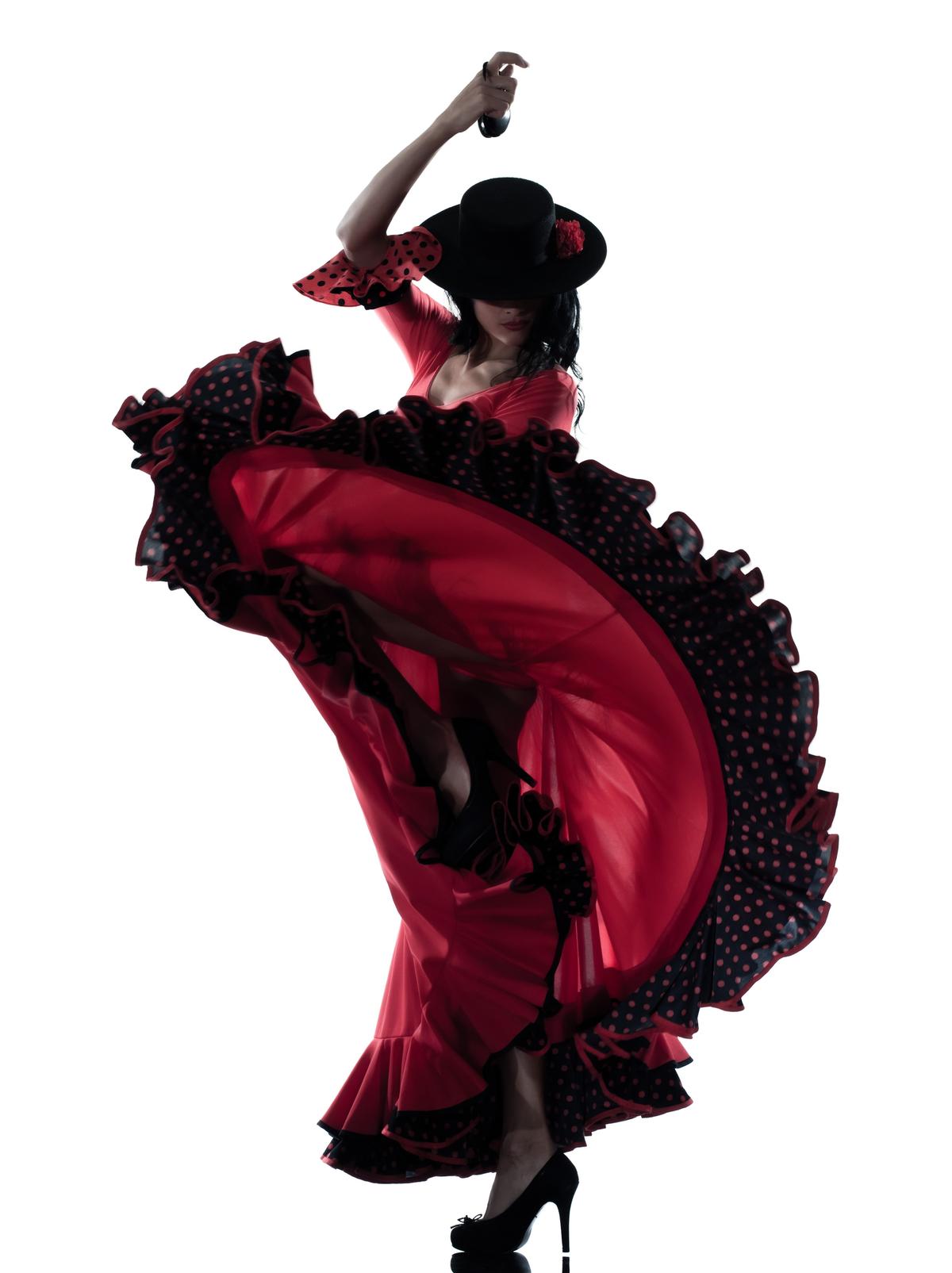
A professional dress for a dancer could weigh as much as 25 kilograms
| Photo Credit:
OSTILL
Reinventing the flamenco
The dress costs anything from €400 (approx. ₹35,000) to €4,000 (approx. ₹3.58 lakh). For many women, dressing up in this outfit is a way of preserving and taking their Andalusian traditions forward. Many accessorise the dress with colourful Mantone or Manila shawls with fringes, long hoops or earrings and bracelets with their hair in a bun adorned with a comb and flowers.
Every spring, around May, the Andalusia region holds its week-long fairs and there is a great demand for these dresses and accessories such as bolero jackets and shawls. “The hourglass silhouette of the flamenco dress is very flattering to the female form, as it is closely fitted to the thigh and at the waist and then flares out into a ruffled skirt,” explains our local guide, Trinidad Blanco Martinez. “The dress is all about flamboyance. You have to embrace the bold colours and dramatic silhouettes.”
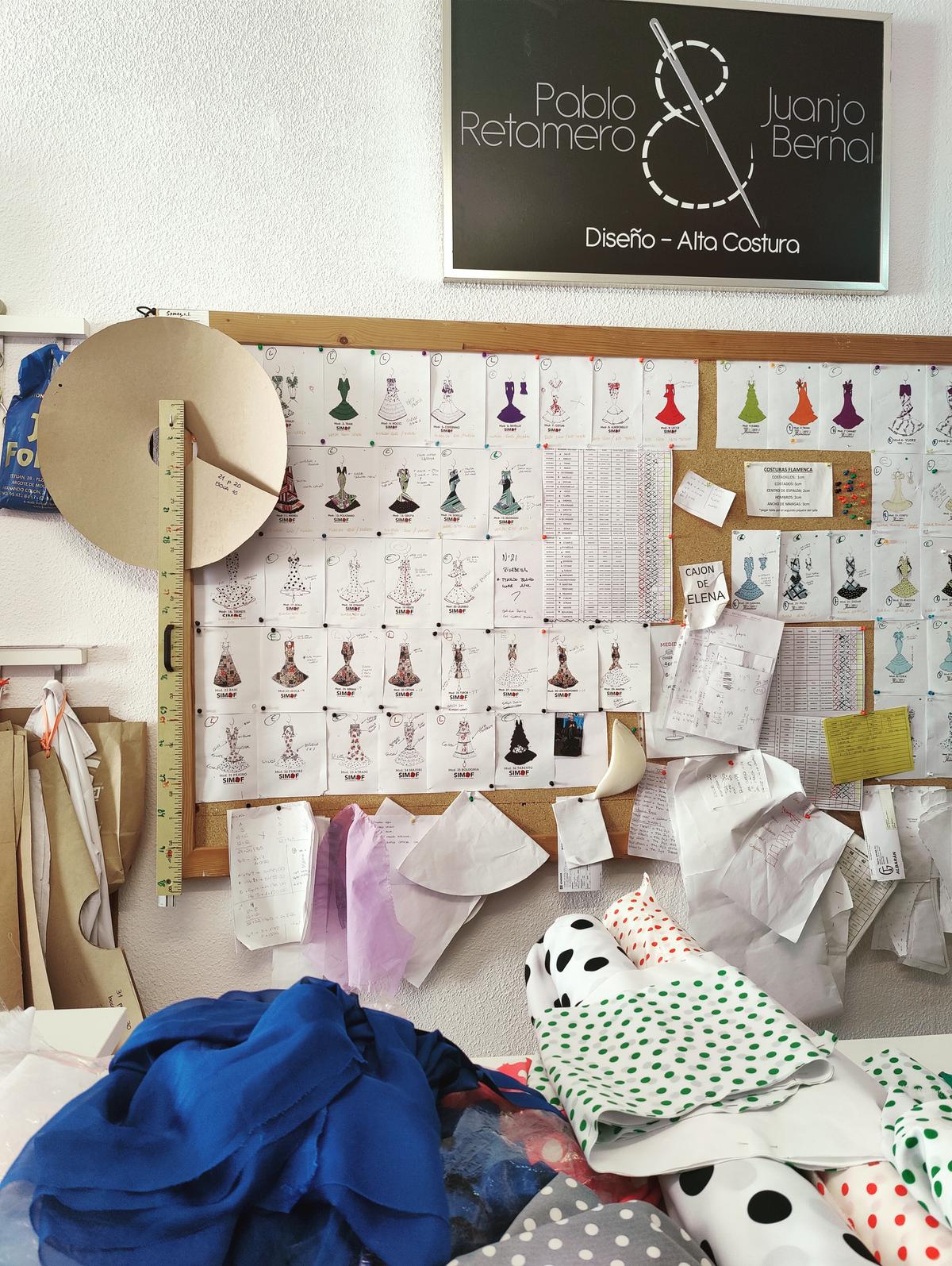
A Spanish design studio
| Photo Credit:
Special Arrangement
Even popular designers like Balmain and Dior have been inspired by the dress. For the Dior Cruise 2023 line, Maria Grazia Chiuri chose Seville as her new location and source of inspiration. The collection had capes and boleros, embroidery, the maison’s signature designs like the bar jacket with intricate embroidery and exclusive accessories like sombreros made locally.
In the Rioja area, we visit the atelier of designer Javier Garcia, who works with clients only by appointment. He uses flowing material like silk, crepe, chiffon and taffeta. Javier shows us a contemporary, flamenco-inspired off-shoulder black dress that weighs 25 kilograms and costs around €1,500 (approx. ₹1.35 lakh). “Of course, one cannot live exclusively off flamenco fashion as the season extends from Apriluntil October. So, we also make other couture like wedding and bridal outfits,” explains Javier, known for creating flamenco outfits that are more contemporary. He adds, “Flamenco fashion has come up with new variations like bomber jackets with ruffles and sports flamenco wear.”
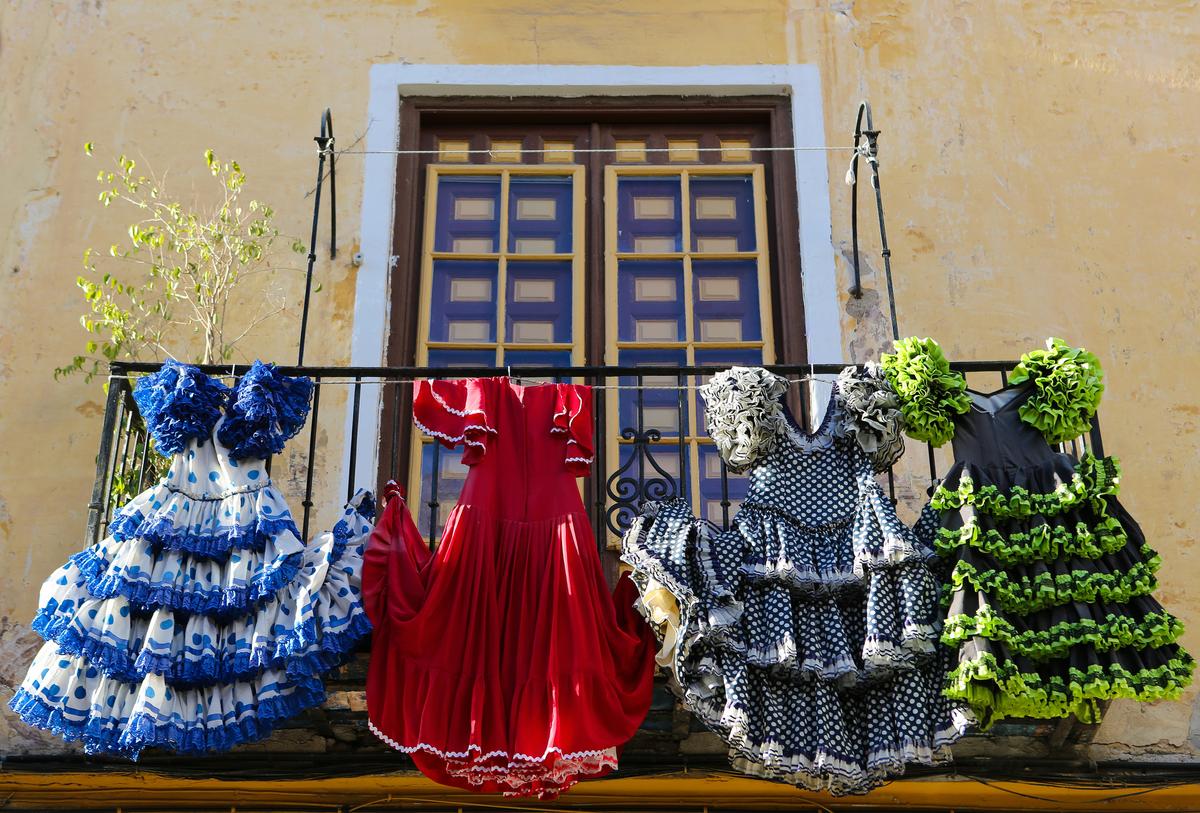
Traditional flamenco dresses at a house in Malaga, Andalusia, Spain.
| Photo Credit:
Jorisvo
Published – February 06, 2025 04:23 pm IST


